The pillbox array shown below was hard to resist and I immersed myself into map making in
Combat Mission Fortress Italy.
 |
| Pillbox defenses east of Licata. Way east, I must add. Pardon the black bar in the bottom, it's my tablet's. |
Google maps continues to be the best friend of war nerds like me. The topographic maps are not quite up to military standards, but they certainly are very helpful.
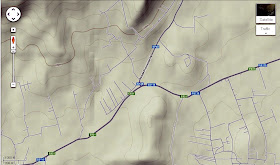 |
| It took me a while to find the map location of the vintage photo, but here it is! |
Now with Google maps "street view" you can get the view along selected rows. I was floored when I saw that the pillboxes are still there.
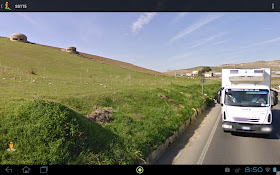 |
| The pillboxes on the left are the ones in the foreground of the vintage photo. |
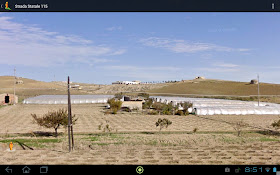 |
| A wide view of the pillboxes north of state route 115. Some of these are seen in the mid-background of the vintage photo. |
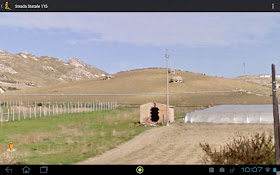 |
| These are the three pillboxes shown in the mid-background of the vintage photo. |
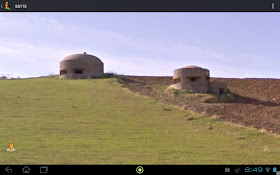 |
| A close up of the pillboxes from where the original photo was taken from. |
The street view is a great tool to get a "feel" of the ground layout too. I went all across route 115 to see if the pillboxes are well laid out in terms of fields of fire, but I could not figure it out.
Maybe you want to try by yourself and here is the
link to the location (link opens in Google maps).
As with other games, map making continues to be laborious in
Combat Mission. Two additions of note for Fortress Italy are the possibility to add an overlay to the map (displays a bmp image on top of the map you are making) and the automatic layout of roads and assorted walls (no more clicking one tile at a time, you can now click the start and the end point and be done). The sore spots of
Combat Mission's map editor are, as before, roads that run at an angle different that 45 degrees (the auto layout feature will produce a seesawing pattern with a curve every 6 meters) and some funkiness in the elevation editor. Some angled roads need to be faked as short stretches of 45 degree and straight roads. The elevation generating algorithm has sometimes a mind of his own for folding the terrain, but again, this is something that can be fixed by the user with a bit of elbow grease.
So, I started a Combat Mission map for this location. It's a work in progress and I am down to the small details now.
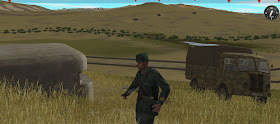 |
| An Italian officer inspects the fortifications east of Licata. This screenshot is taken from the more or less corresponding location of the original photo. |
Last night I found out that this location unlikely saw any combat. Doh! I should have guessed from the lack of damage in the bunkers shown above. So, when the map is done, is going to be witness to some fictional scenario. Oh well ...
Cheers,








Great Idea. I never thought of using street view for map making.
ReplyDeleteThx alot
Nice, there are many more tools for mappers these days, no more digging around for obscure maps or pure guesswork. Of course, in some places things have changed a lot over 60+ years...
ReplyDeleteDid the allies just bypass these fortifications? The vintage photo was taken after the operations were over I guess?
Hello and thanks for your comments.
ReplyDeleteSeydlitz: street view gives you a sense of the main terrain features (hills, rivers, etc) that no contour map can offer.
Pathduck: this sector lies too far away from the initial objectives of the landing force at Licata. I thought this was the so-called "Poggio Lungo" (an initial US Army objective), but it doesn't look like.
Cheers,
Nice and neat idea. Great job
ReplyDeleteThanks. The map turned out to be a bit too big ... I don't know. I am more enthusiastic about one that I made this weekend, thoug. Stay tuned!
ReplyDeleteCheers,